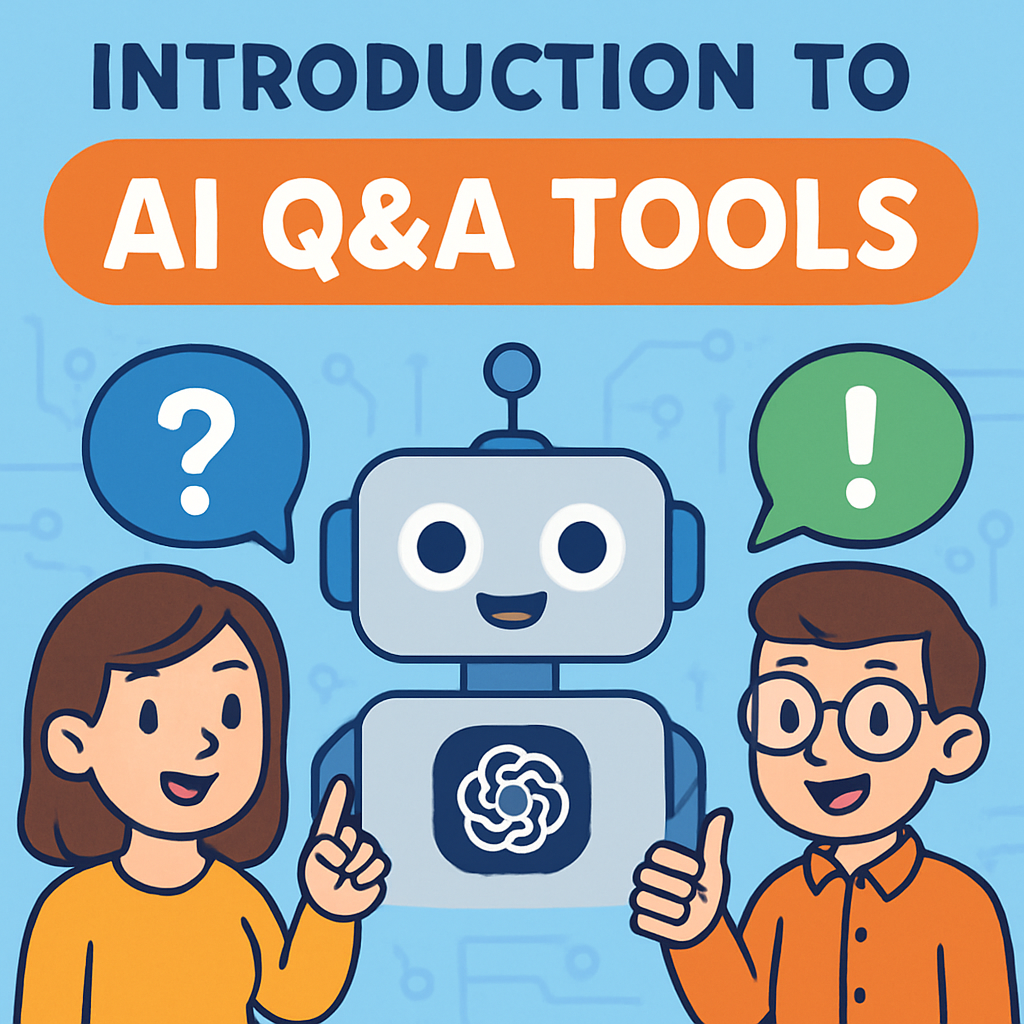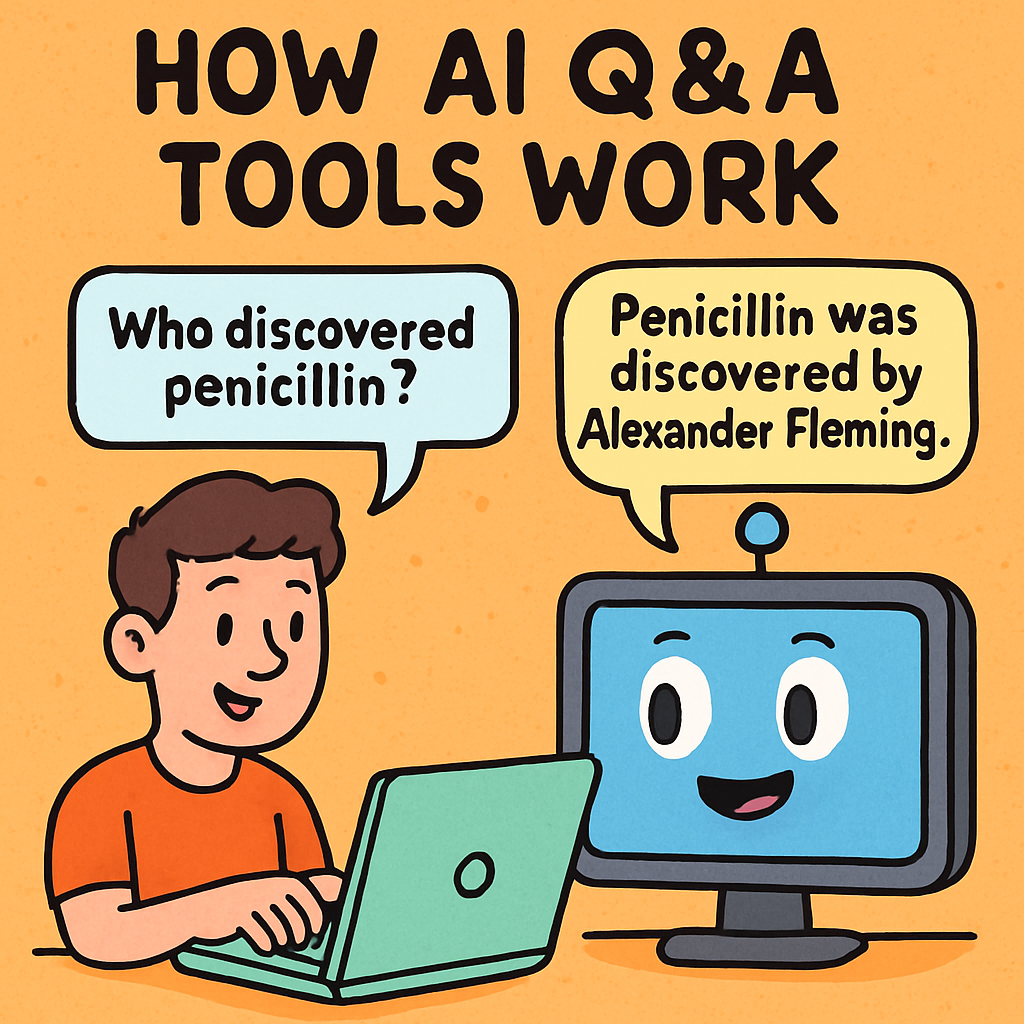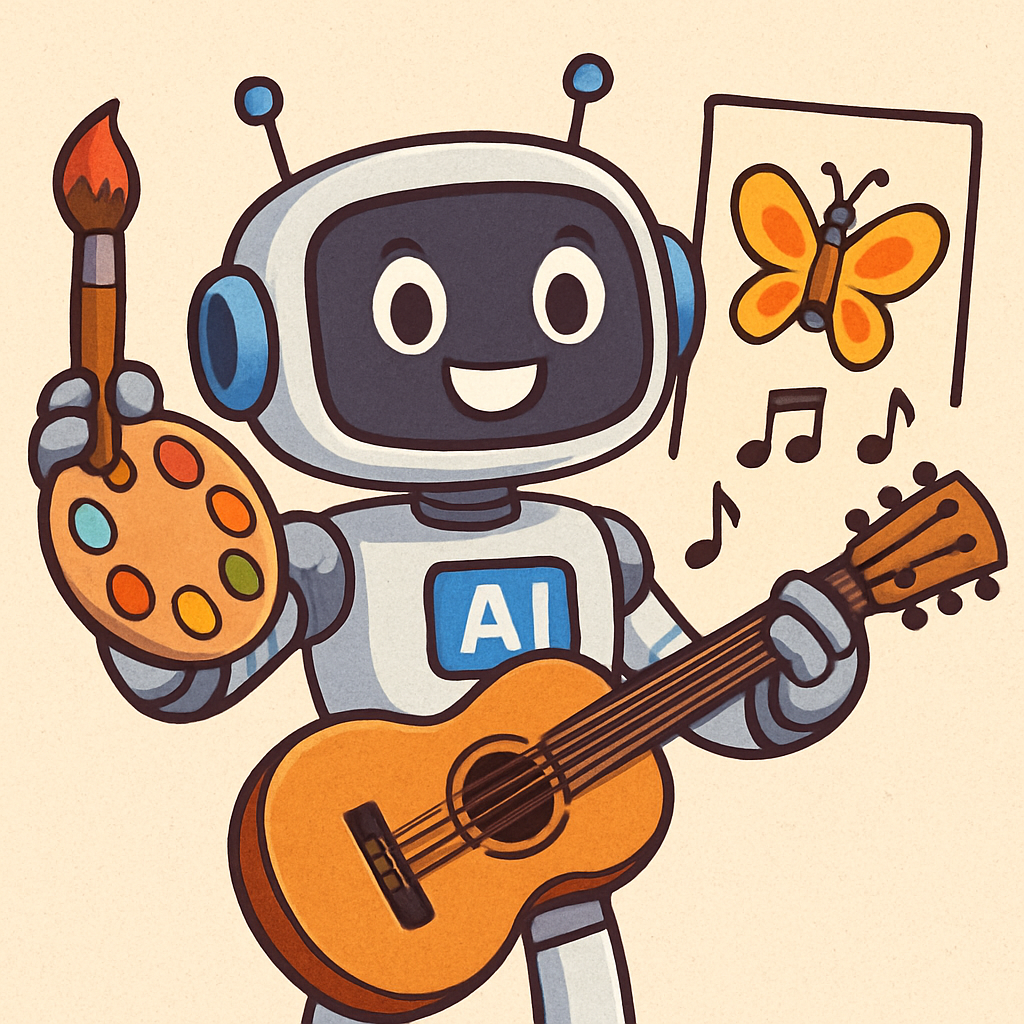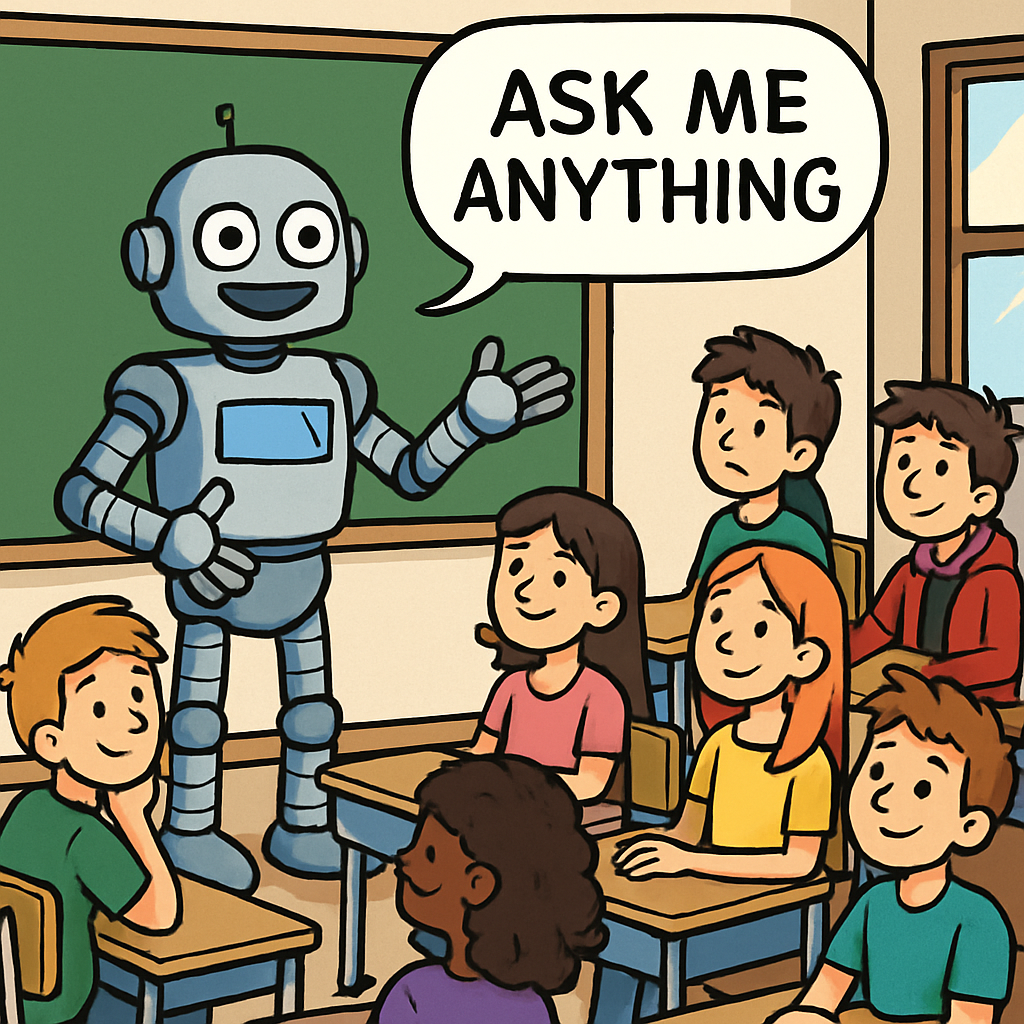 In this lesson, you will explore AI-powered question and answer (Q&A) tools. Artificial Intelligence refers to computer systems designed to perform tasks that typically require human intelligence.
In this lesson, you will explore AI-powered question and answer (Q&A) tools. Artificial Intelligence refers to computer systems designed to perform tasks that typically require human intelligence.
These tools function as intelligent chatbots that can respond to your questions in a conversational manner, similar to discussing a topic with a knowledgeable peer. Notable examples include ChatGPT and Grok.
In contrast to traditional search engines like Google, which provide a list of website links for you to investigate, AI Q&A tools interpret your query and deliver a direct, concise response in everyday language. Rather than merely directing you to external sources, they offer immediate explanations.
For instance, if you enter the query “How do plants make food?” into a search engine, it will show a list of websites, such as science blogs or educational articles, where you can read about photosynthesis.
However, an AI Q&A tool might respond directly with: “Plants make food through a process called photosynthesis. They use sunlight, carbon dioxide from the air, and water from the soil to create glucose, which gives them energy to grow.”
These tools can enhance your learning by providing quick access to information and explanations. They are particularly useful for students as they can clarify concepts, assist with homework ideas, or spark curiosity about new topics.
Nevertheless, it is important to use them responsibly. AI Q&A tools are designed to support your learning process, but they should not substitute for your own critical thinking and research skills.
 In this step, we will examine the underlying mechanisms of AI Q&A tools. These tools utilise artificial intelligence, which enables computer systems to perform tasks that typically require human-like understanding and reasoning.
In this step, we will examine the underlying mechanisms of AI Q&A tools. These tools utilise artificial intelligence, which enables computer systems to perform tasks that typically require human-like understanding and reasoning.
When you submit a question, the AI first analyses it through a process known as parsing. This involves breaking down the sentence into its key components to comprehend the intent.
For example, in the query “How do plants make food?”, the AI identifies “plants” as the subject and “make food” as a task related to biology or science. It then understands that the question is likely about the process of photosynthesis and generates an appropriate response based on that context.
Subsequently, the AI draws upon an extensive database of information, often referred to as its training data. This data encompasses vast collections from books, articles, websites, and other sources. The AI employs advanced algorithms, such as machine learning models, to identify patterns and generate a relevant response. Tools like ChatGPT are trained on enormous datasets, sometimes comprising billions of sentences, to refine their ability to predict accurate and natural-sounding answers.
Finally, the AI constructs a response in natural language, simulating a conversational tone. This is achieved through techniques like natural language generation, ensuring the output is coherent and easy to understand.
AI tools can be valuable resources in various educational and exploratory contexts, although they are not suitable for every situation. In this step, we will examine appropriate applications for these tools and scenarios where caution is advised.

These tools excel in providing swift and accessible information, fostering creativity, and offering guidance on general topics. Below are some examples of effective uses:
While AI Q&A tools offer convenience, they have limitations and should not be relied upon in certain cases. It is essential to recognise when alternative sources are more appropriate:
 In this practical activity, you will have the opportunity to interact with an AI Q&A tool. This will allow you to experience first-hand how these tools function and to apply what you have learned in the previous steps. You will need access to the internet. Please visit ChatGPT or another similar free AI Q&A tool that your teacher may recommend.
In this practical activity, you will have the opportunity to interact with an AI Q&A tool. This will allow you to experience first-hand how these tools function and to apply what you have learned in the previous steps. You will need access to the internet. Please visit ChatGPT or another similar free AI Q&A tool that your teacher may recommend.
Ensure that you are in a safe online environment and remember not to share any personal information during your interactions.
AI Q&A tools are powerful resources, but they have certain limitations. In this step, you will learn about common pitfalls associated with these tools and tips for using them safely and effectively. Understanding these aspects will help you become a more responsible and informed user.

It is important to be aware of potential issues that can arise when using AI Q&A tools. These pitfalls can lead to inaccurate or misleading information if not recognised.
To maximise the benefits of AI Q&A tools while minimising risks, follow these guidelines for responsible use: 
By being mindful of these pitfalls and applying safe usage tips, you can use AI Q&A tools as valuable learning companions without compromising accuracy or safety.